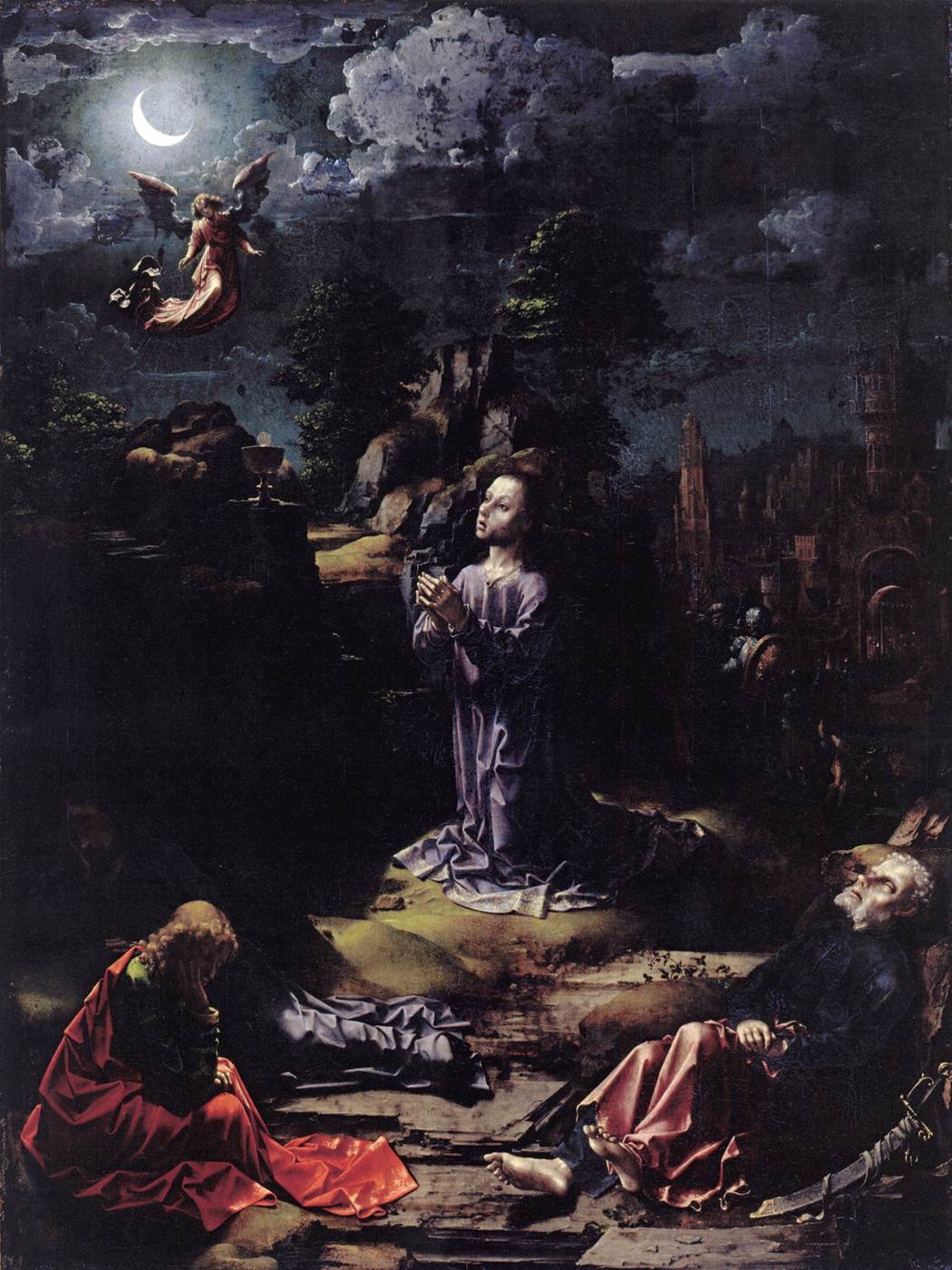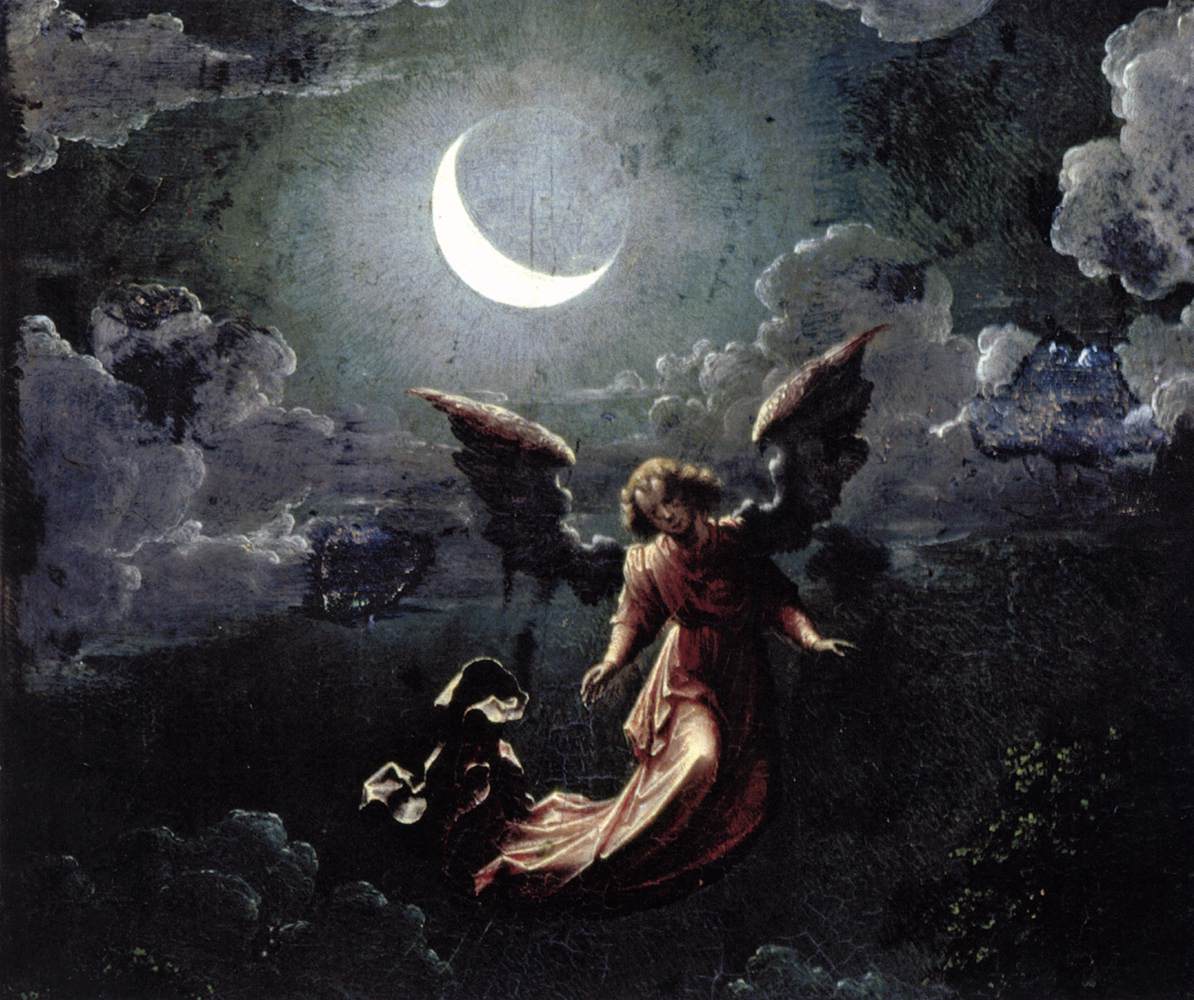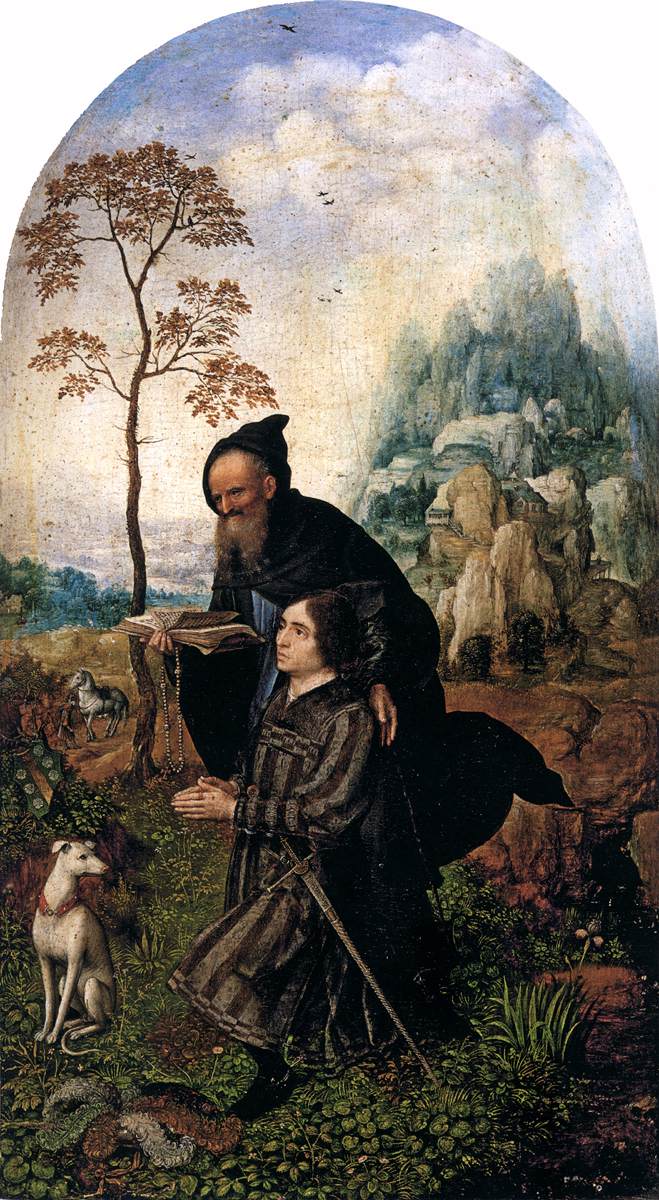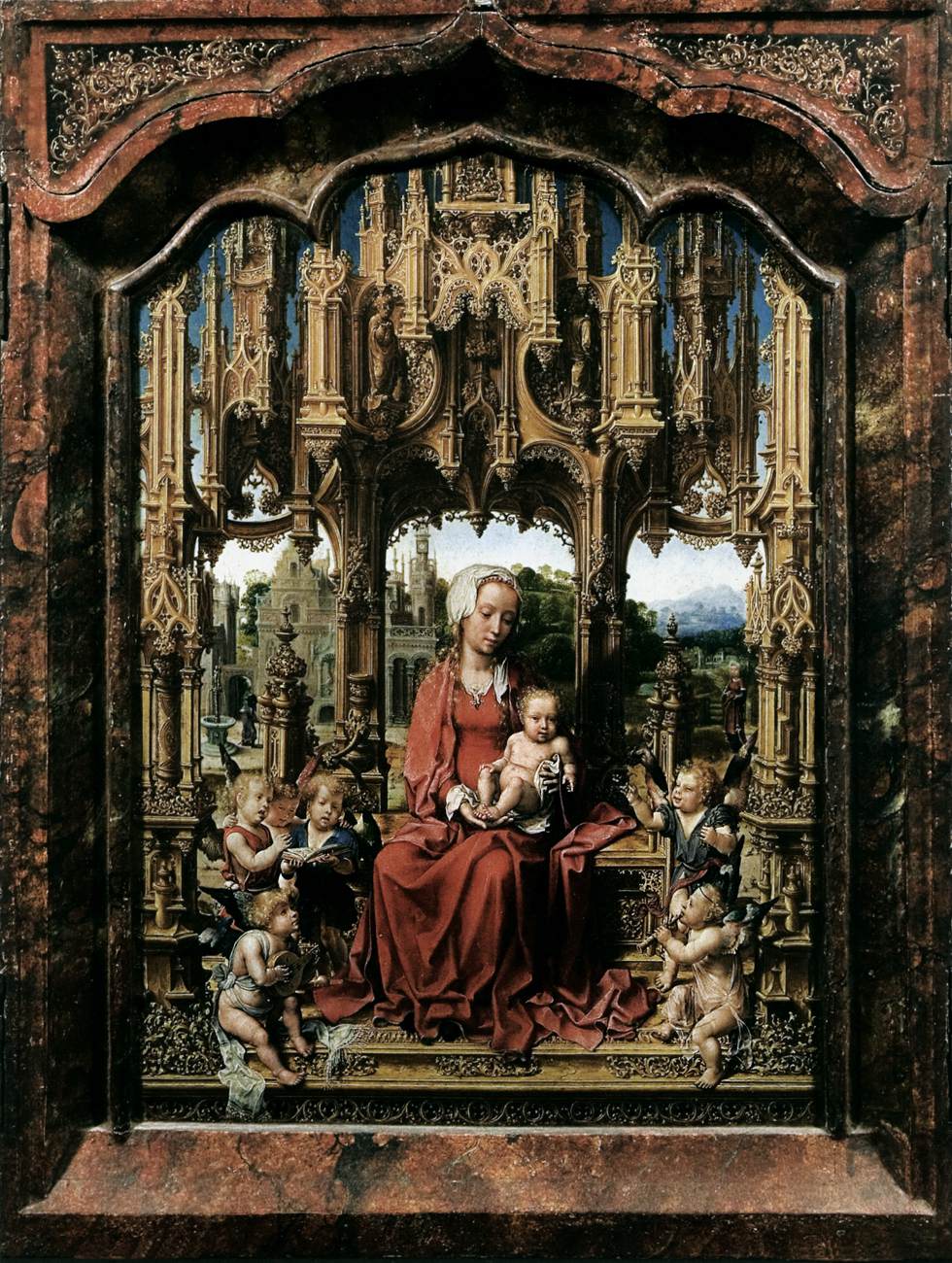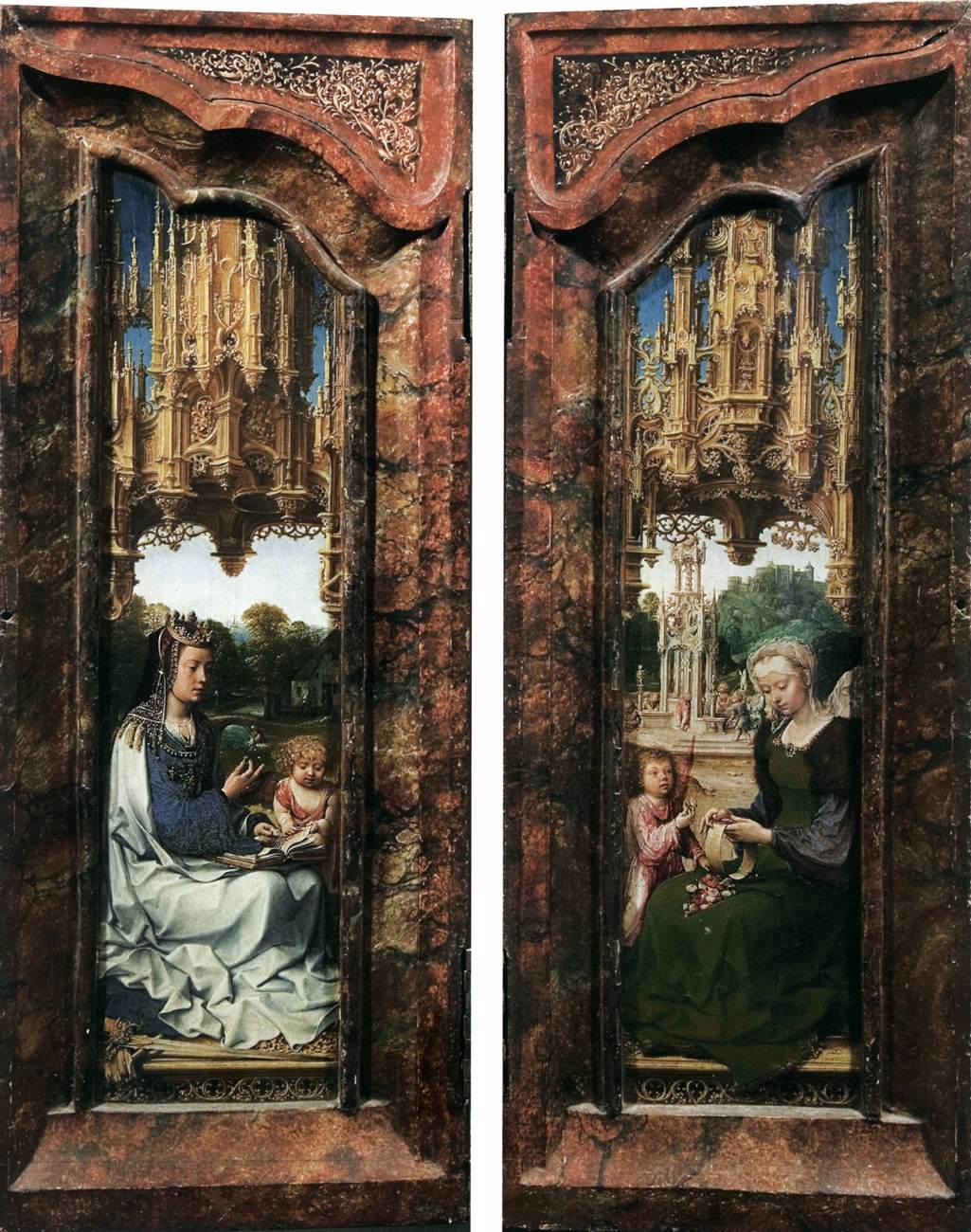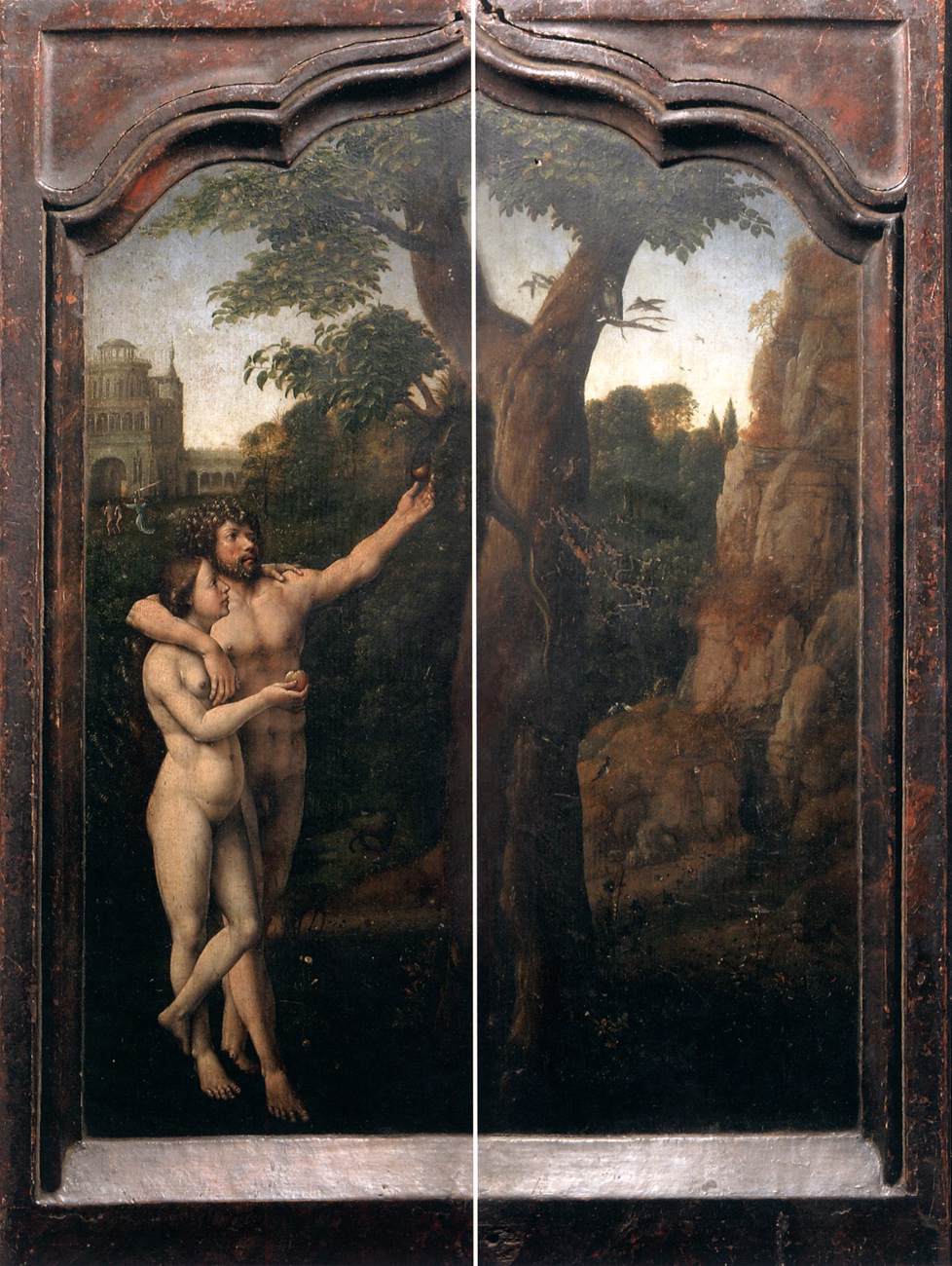Jan Gossart (Gossaert), called Mabuse, Flemish painter, draughtsman and engraver. He was born in 1478, most probably Maubeuge (now in France) in the Burgundian province of Hainaut. It was under the name "Jennyn Van Henegouwe" (John of Hainaut) that he was received as a master of the Guild of St Luke at Antwerp in 1503. We do not know where he was apprenticed, and his early career is largely obscure. The composition and nature of certain of his religious paintings suggest he may have trained in Bruges, perhaps with Gérard David. But he also seem to have been one of the first representatives of what we may call Antwerp mannerism, as can be seen in his signed drawing, The Mystic Marriage of St Catherine.
In 1508, Gossart travelled with Philip of Burgundy, the admiral of Zeeland, whom Margaret of Austria had sent to Rome as her envoy to Pope Julius II. They interrupted their journey to visit Trento, Verona, Mantua and Florence, where Gossart discovered the luminous art of the Quattrocento, and the splendours of classical Antiquity. On his return, he continued to study and paint for several years (1509-1516), without being able to make full use of his Italian discoveries. During this period, he received many commissions on religious subjects, for which he drew on the iconographical and technical resources of the Flemish tradition, the inventions of the Italian Renaissance, and the inspirational example of Dürer. His Agony in the Garden is one of the first northern nocturnes, and its violent intensity owes something to both Dürer and Mantegna.
When he moved to Souburg at the end of 1515, Gossart finally found the place where he could express himself as an artist of the Renaissance and fully exploit his experience in Rome. There he was encouraged by the prince and humanist Philip of Burgundy, who drew him into his plan to construct an Italian-style palace decorated with figures from classical mythology. It was thus that Gossart came to paint life-size secular nudes, a subject for which there was no precedent in the former provinces of Burgundian Flanders. As Guicciardini was to say, in 1567: 'John of Hainaut was the first to bring the art of representing historical and poetical subjects with nude figures from Italy to the countries of the North." The following year, Gossart, following Philip of Burgundy's instructions, decorated Ferdinand the Catholic's funeral hearse with nude figures and martial trophies in the classical vein. And later, in 1527, he painted Danaë, one final work on a mythological subject, a large-scale work, using sober and elegant architectural motifs as the setting for its subject.
Gossart always devoted much of his time to drawing. He was particularly attracted to pen and ink drawing, more so than to drawing in pencil. His oeuvre includes many projects for engravings, paintings and stained glass windows. Dürer was always his master in this domain, and it was apparently Dürer's stay in the Netherlands in 1520 and the consequent diffusion of his prints, that inspired Gossart to make his prints: two with burin, one etching and two woodblock prints.
Gossart also painted many portraits. By their rigorous psychological analysis he is surely one of the most talented northern artists to have practised this genre. Among his finest works in this respect are probably the Man with Rosary and The Elderly Couple, in the National Gallery, London, along with The Children of Christian II of Denmark. Usually, he would paint his sitters against a dark background. After 1525, he began to use a slab of coloured marble as backdrop, and provide a trompe-l'oeil frame of the kind that can be seen in certain Florentine portraits.
Gossart's art was intensely personal and innovative. Although it had virtually no impact on his contemporaries, it was to profoundly influence the subsequent generation of painters. After his death in 1532, his fame began to spread through Italy, and during the 17th and 18th centuries he was also considered a major artist in the Southern Netherlands, despite the many transformations that the art of the North was about to undergo.
//
![]()

